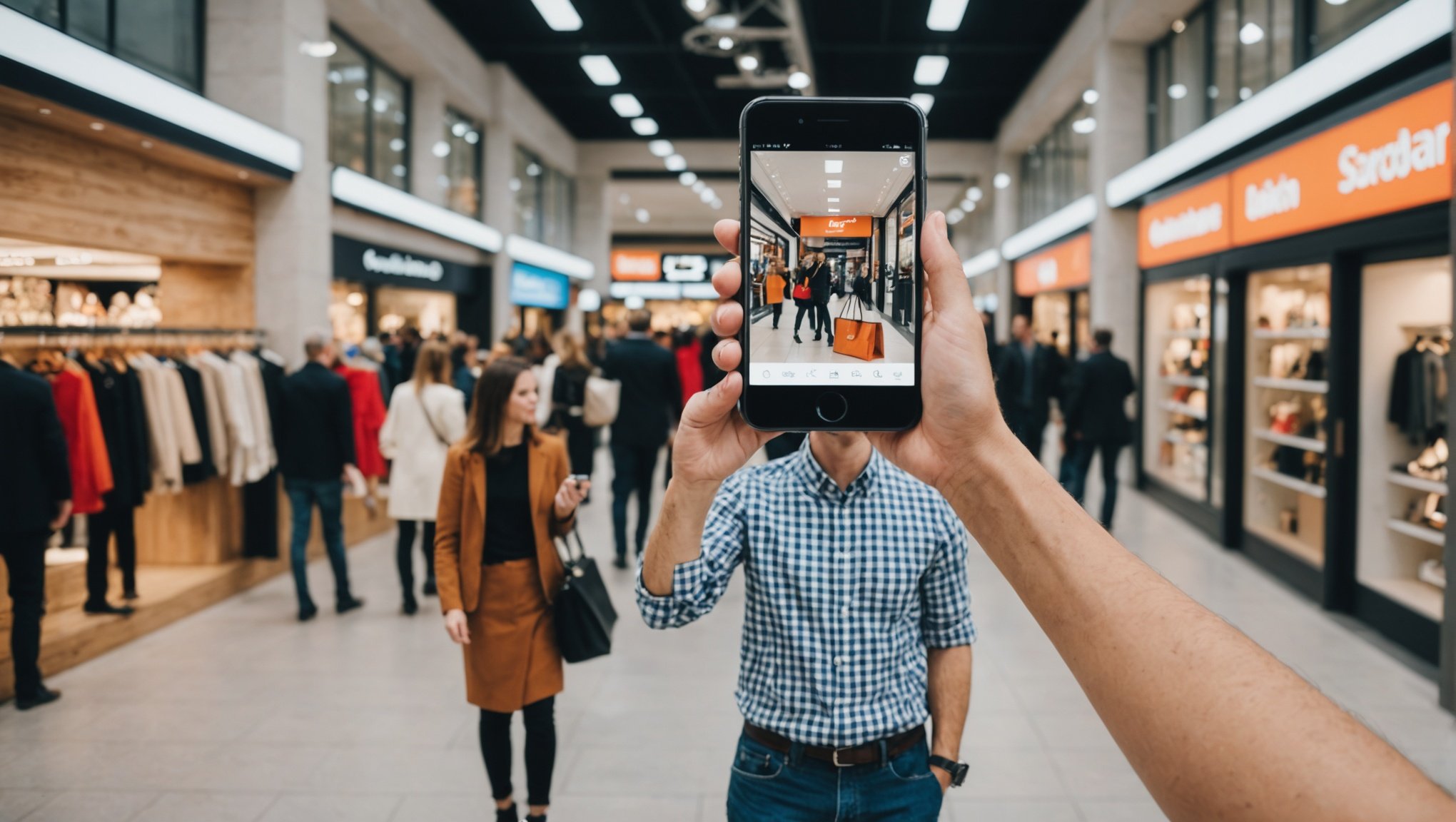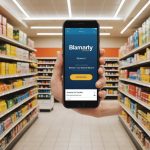Unlocking the Future of Shopping: How UK Retailers Can Optimize Customer Experiences with Visual Search Technology
In the ever-evolving retail landscape, technology is playing an increasingly crucial role in enhancing the shopping experience for customers. One of the most promising innovations in this realm is visual search technology, which is revolutionizing how customers find and interact with products. Here’s a deep dive into how UK retailers can leverage this technology to optimize customer experiences.
The Rise of Visual Search Technology
Visual search technology is no longer a novelty; it’s becoming a necessity for retailers aiming to stay ahead in the competitive market. This technology uses artificial intelligence (AI) and machine learning to enable customers to search for products using images rather than text.
In the same genre : Boosting Sales and Cutting Returns: The Power of Virtual Try-On Tech for UK Retailers
For instance, Miros, a visual AI e-commerce search solution, has raised €6 million to expand its market reach and enhance its technology. Miros’ AI can predict online shoppers’ intent, allowing users to find what they are looking for in under 60 seconds, even when product metadata is insufficient.
Enhancing the Shopping Experience
Personalized and Efficient Shopping
Visual search technology offers a more intuitive and efficient shopping experience. Here are some key ways it enhances customer interactions:
Also read : Top Strategies for UK Small Businesses to Craft a Winning Social Media Plan
-
Quick Product Discovery: With visual search, customers can find products faster than traditional text-based searches. For example, Jomashop, a US-based luxury goods retailer, saw a 3.6% increase in gross merchandise value (GMV) and a 1.3% lift in average order value (AOV) after implementing Miros’ visual search technology.
-
Real-Time Feedback: This technology provides real-time feedback, helping customers make informed decisions quickly. For instance, if a customer uploads a picture of a dress, the system can immediately suggest similar dresses or accessories.
-
Reduced Returns: By allowing customers to see how products look in real-life scenarios, visual search can reduce the likelihood of returns. This is particularly beneficial for online apparel purchases, where fit and appearance are crucial.
Use Cases in Retail
Here are some practical use cases of visual search technology in retail:
-
Virtual Try-Ons: Several apparel brands are using augmented reality (AR) and virtual reality (VR) to allow customers to try on clothes virtually. This technology, combined with visual search, can show customers how they would look in different outfits without the need for physical try-ons.
-
Smart Shelves and Inventory Management: Visual search can be integrated with smart shelves to provide real-time inventory updates. This ensures that customers can see what products are available and helps retailers manage their stock more efficiently.
-
Facial Recognition and Personalized Recommendations: Some retailers are exploring the use of facial recognition to offer personalized product recommendations. For example, a customer walking into a store could be recognized and offered tailored suggestions based on their past purchases and preferences.
Leveraging Customer Data
The Power of Customer Data
Customer data is the backbone of any successful retail strategy, and visual search technology amplifies its value. Here’s how retailers can leverage customer data with visual search:
-
Predictive Analytics: By analyzing customer search patterns and preferences, retailers can use predictive analytics to anticipate demand and optimize their inventory management. This ensures that popular products are always in stock and reduces the risk of overstocking.
-
Dynamic Pricing: Real-time data from visual search can help retailers implement dynamic pricing strategies. For instance, if a product is frequently searched but not often purchased, the retailer might consider adjusting the price to make it more competitive.
-
Customer Satisfaction: Understanding customer behavior through visual search data helps retailers improve customer satisfaction. For example, if many customers are searching for a specific product that is out of stock, the retailer can prioritize restocking that item.
Integrating Visual Search into Omnichannel Strategies
Seamless Shopping Experiences
Visual search technology is not limited to online shopping; it can be integrated into an omnichannel retail strategy to provide seamless shopping experiences across all touchpoints.
-
In-Store Experience: Retailers can use visual search in-store through mobile apps or kiosks, allowing customers to find products quickly and get additional information such as reviews and availability.
-
Social Commerce: Visual search can be deployed on social media platforms to enhance social commerce. For example, customers can upload a picture of a product they like, and the system can suggest where to buy it or offer similar products.
-
Augmented Reality: Combining visual search with augmented reality (AR) can create immersive shopping experiences. Customers can see how products would look in their home or on them before making a purchase.
Practical Advice for Retailers
Implementing Visual Search Technology
Here are some practical steps retailers can take to implement visual search technology effectively:
-
Invest in AI and Machine Learning: Retailers need to invest in AI and machine learning capabilities to develop and refine their visual search systems. Companies like Walmart are already seeing significant benefits from such investments, such as improved product catalog quality and multilingual search functionality.
-
Integrate with Existing Systems: Visual search should be integrated with existing e-commerce platforms, inventory management systems, and customer relationship management (CRM) systems to ensure a cohesive and efficient shopping experience.
-
Train and Support Staff: Retail staff need to be trained on how to use and support visual search technology. This includes understanding how to troubleshoot issues and how to guide customers in using the technology effectively.
Case Studies and Success Stories
Real-World Examples
Here are some real-world examples of how visual search technology is transforming the retail industry:
-
Jomashop: As mentioned earlier, Jomashop saw significant improvements in GMV and AOV after implementing Miros’ visual search technology. This demonstrates the direct impact visual search can have on business metrics.
-
Walmart: Walmart’s use of GenAI for product catalog enhancement and multilingual search is a prime example of how large retailers can benefit from advanced AI technologies. This has improved the overall shopping experience for customers and enhanced operational efficiency.
Future Trends and Innovations
The Future of Retail
As technology continues to evolve, here are some future trends and innovations that retailers should be aware of:
-
Advanced AI Tools: The integration of more advanced AI tools, such as generative AI, will continue to enhance the shopping experience. For instance, AI can create personalized style suggestions based on customers’ past purchases and preferences.
-
Digital Twins: Retailers will increasingly use digital twins to simulate real-world scenarios, such as store layouts and inventory management. This can help in making more accurate site selection decisions and tailoring stores to specific communities.
-
Immersive Experiences: Technologies like AR and VR will become more prevalent, offering customers immersive shopping experiences that blur the lines between physical and digital retail.
Visual search technology is not just a trend; it’s a game-changer for the retail industry. By leveraging this technology, UK retailers can provide more personalized, efficient, and enjoyable shopping experiences for their customers. Here’s a summary of the key points:
Key Takeaways
- Enhanced Customer Experience: Visual search technology offers a more intuitive and efficient way for customers to find products.
- Data-Driven Insights: It provides valuable customer data that can be used for predictive analytics, dynamic pricing, and inventory management.
- Omnichannel Integration: Visual search can be integrated across all touchpoints to provide seamless shopping experiences.
- Practical Implementation: Retailers need to invest in AI, integrate with existing systems, and train staff to support the technology.
- Future Trends: Advanced AI tools, digital twins, and immersive experiences will continue to shape the future of retail.
As Gary Whittemore, Head of Sales EMEA & APAC at RetailNext, notes, “Younger consumer cohorts are embracing physical retail,” and visual search technology is a key component in this revival, making the shopping experience more engaging and personalized.
By embracing visual search technology, UK retailers can unlock a new era of customer satisfaction, operational efficiency, and business growth.











